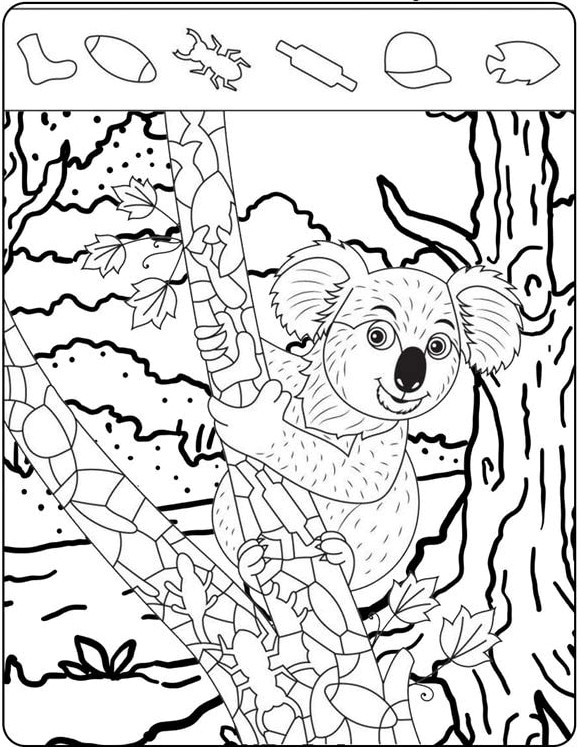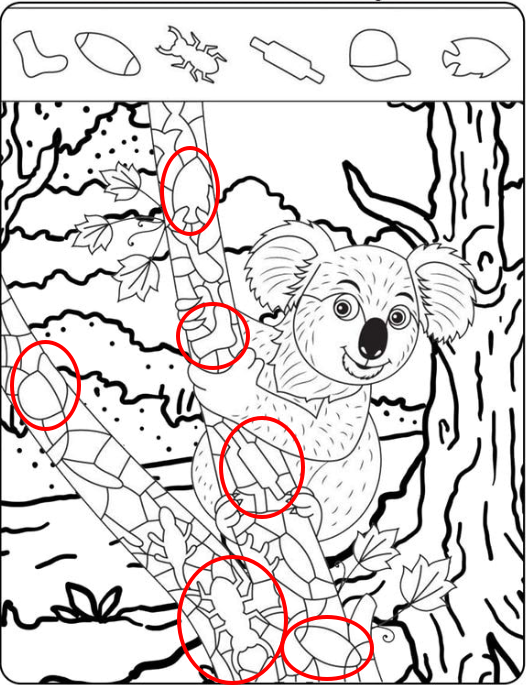The Joyful World of Koalas: Discovering Nature’s Adorable Tree Huggers
Koalas are among the most beloved and fascinating creatures in the animal kingdom. Known for their cuddly appearance and tree-dwelling lifestyle, these furry marsupials capture the hearts of nature lovers worldwide. In this delightful scene, we see a charming koala clutching a tree, inviting us to explore the wonders of its life and environment. But there’s so much more to these unique animals than their cute looks. Let’s dive into the enchanting world of koalas, uncover their habits, habitats, and why they play such an important role in Australia’s ecosystem.

Meet the Koala: Australia’s Iconic Tree Dweller
Koalas are native to Australia and are instantly recognizable by their round fluffy ears, big black nose, and thick grey fur. Despite often being called “koala bears,” they are not bears at all, but marsupials—meaning the females carry and nurse their young in a pouch. These creatures spend most of their lives in eucalyptus trees, where they find both shelter and their favorite food.
Have you ever wondered why koalas are so closely tied to these specific trees? The answer lies in their diet and lifestyle. Koalas primarily eat eucalyptus leaves, which are tough, fibrous, and toxic to many animals. Thanks to a specialized digestive system, koalas can detoxify these leaves and extract the nutrients they need. However, this diet is low in energy, so koalas tend to sleep for up to 20 hours a day to conserve it!

Why Koalas Love Trees: More Than Just a Perch
The image of a koala hugging a tree perfectly captures their intimate connection with their arboreal home. Trees aren’t just a resting place for koalas—they’re life essentials. Eucalyptus trees offer food, protection from predators, and a comfy spot to nap. The bark and branches also help regulate the koala’s body temperature on hot Australian days.
Trees provide safety, too. By staying high up, koalas avoid ground-based dangers like wild dogs, dingoes, or snakes. Their strong limbs and sharp claws make them expert climbers, allowing them to navigate the canopy with surprising agility despite their seemingly cuddly and slow appearance.
The Role of Koalas in the Ecosystem
You might think that koalas just hang around trees, but their presence is vital for a healthy environment. As selective feeders, koalas help control the growth of certain eucalyptus species, which encourages biodiversity in the forest. This balance supports other wildlife and maintains the overall health of the ecosystem.
Moreover, their droppings act as natural fertilizer, enriching the soil and promoting new plant growth. So, in many ways, koalas play the role of a gardener in the wild, fostering the environment they depend on.

Challenges Facing Koalas: Conservation in Focus
While koalas might seem abundant and carefree in their treetop homes, they face serious threats in the wild. Habitat loss due to urban development and deforestation has drastically reduced their natural homes. Bushfires, especially in recent years, have devastated large swaths of eucalyptus forests, putting many koala populations at risk.
Climate change further complicates their survival, affecting the availability and quality of their eucalyptus diet. Additionally, diseases such as chlamydia impact koala health and reproduction. Conservation efforts are underway to protect these gentle creatures, including habitat restoration, fire management, and breeding programs.
How You Can Help Koalas Thrive
Want to make a difference for koalas? Supporting conservation organizations is a great start. These groups work tirelessly to preserve habitats, conduct research, and raise awareness. Planting native trees in your community or backyard can also help create corridors for koalas to move safely between habitats.
If you’re lucky enough to visit Australia, consider eco-friendly tourism options that promote koala conservation. And remember, spreading knowledge about these iconic animals is just as important. Every little effort counts!

The Fascinating Behavior of Koalas
Beyond their diet and habitat, koalas exhibit some fascinating behaviors. For instance, despite their reputation for being solitary creatures, koalas have a complex social structure based on territories. Males have larger territories that may overlap with several females, but koalas generally avoid direct contact, except during mating seasons.
Koalas communicate through a variety of sounds, from soft snores to loud bellows that can travel quite far. These vocalizations help establish dominance and attract mates.

Conclusion: Embracing the Koala’s Charm and Importance
Koalas are more than just adorable animals hanging in trees—they are vital parts of their ecosystem and symbols of Australia’s unique wildlife. Their specialized diet, tree-hugging lifestyle, and gentle nature make them fascinating creatures worthy of admiration and protection. By understanding the challenges they face and supporting conservation, we can ensure that future generations will continue to enjoy the sight of these lovable marsupials.
Next time you see an image of a koala like this one, remember the story behind those big eyes and fuzzy ears. It’s a tale of survival, adaptation, and the delicate balance of nature. So, let’s celebrate koalas—not just for their cuteness, but for the incredible role they play in our world.